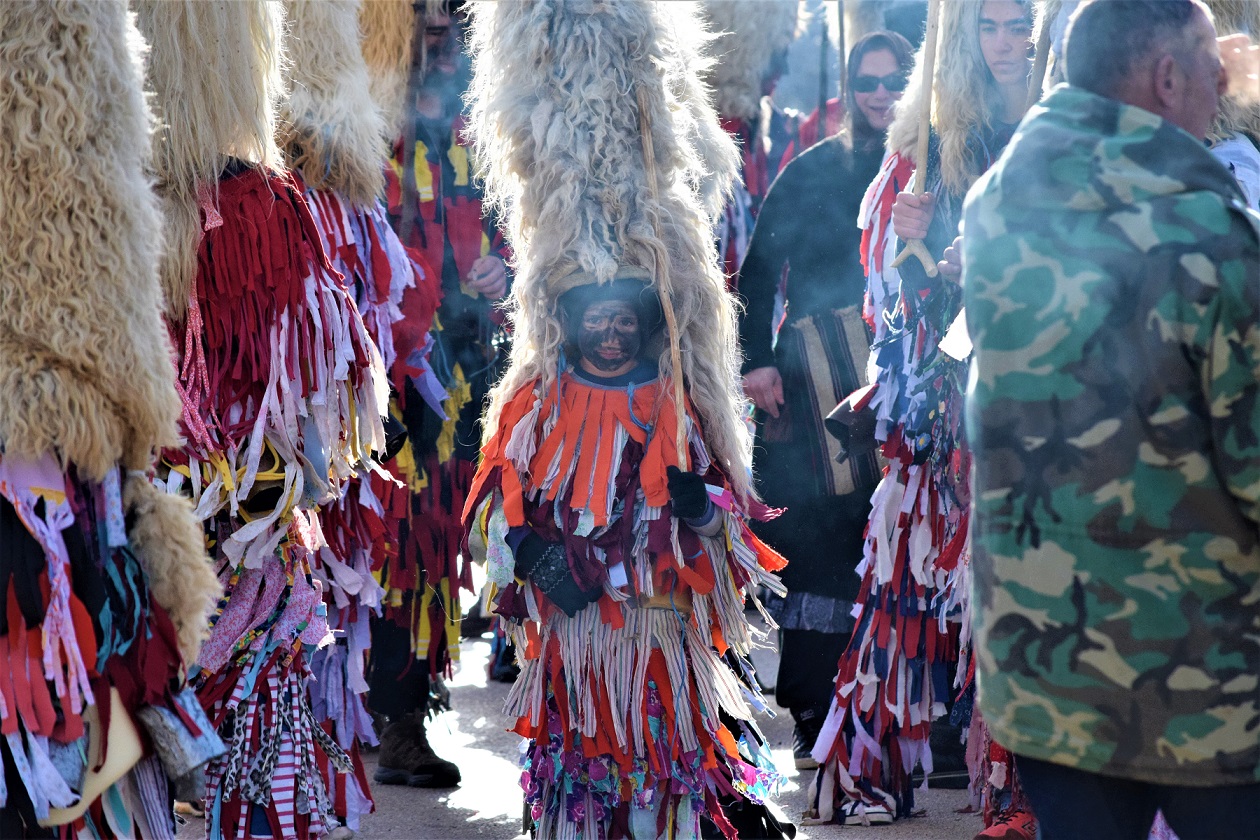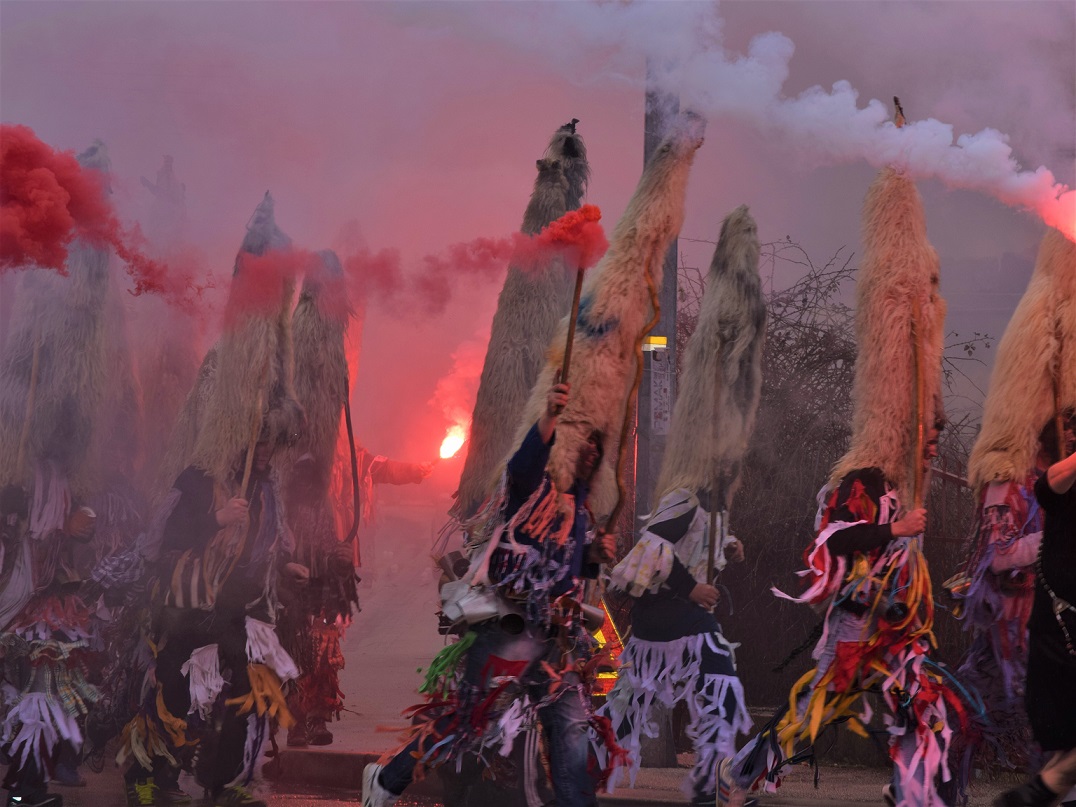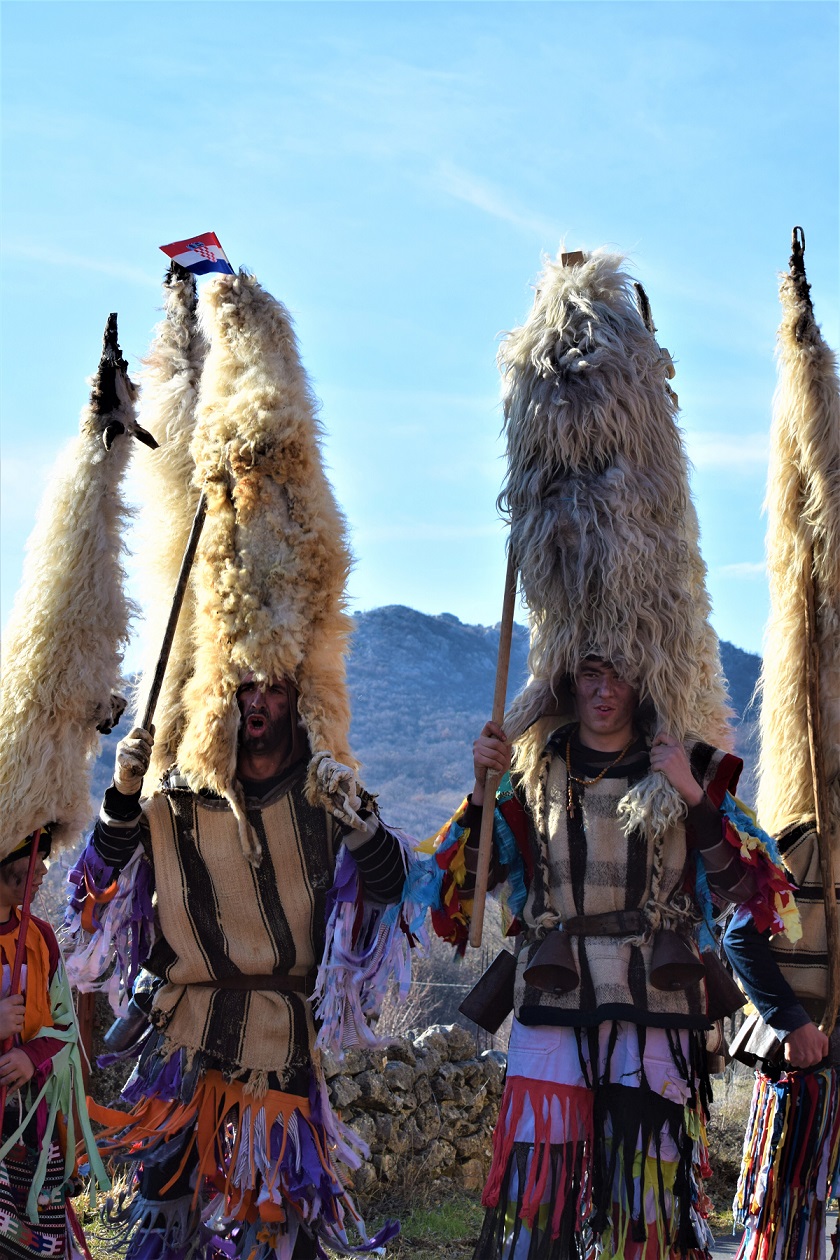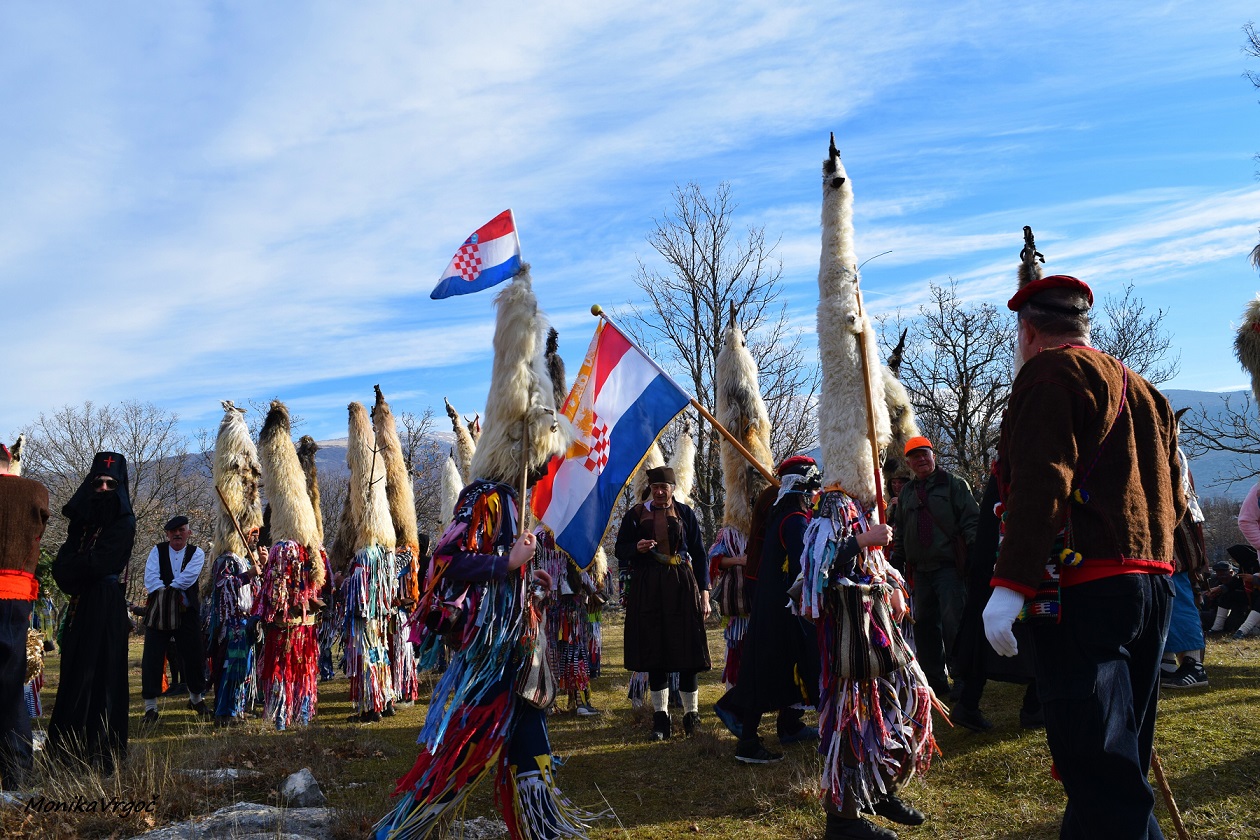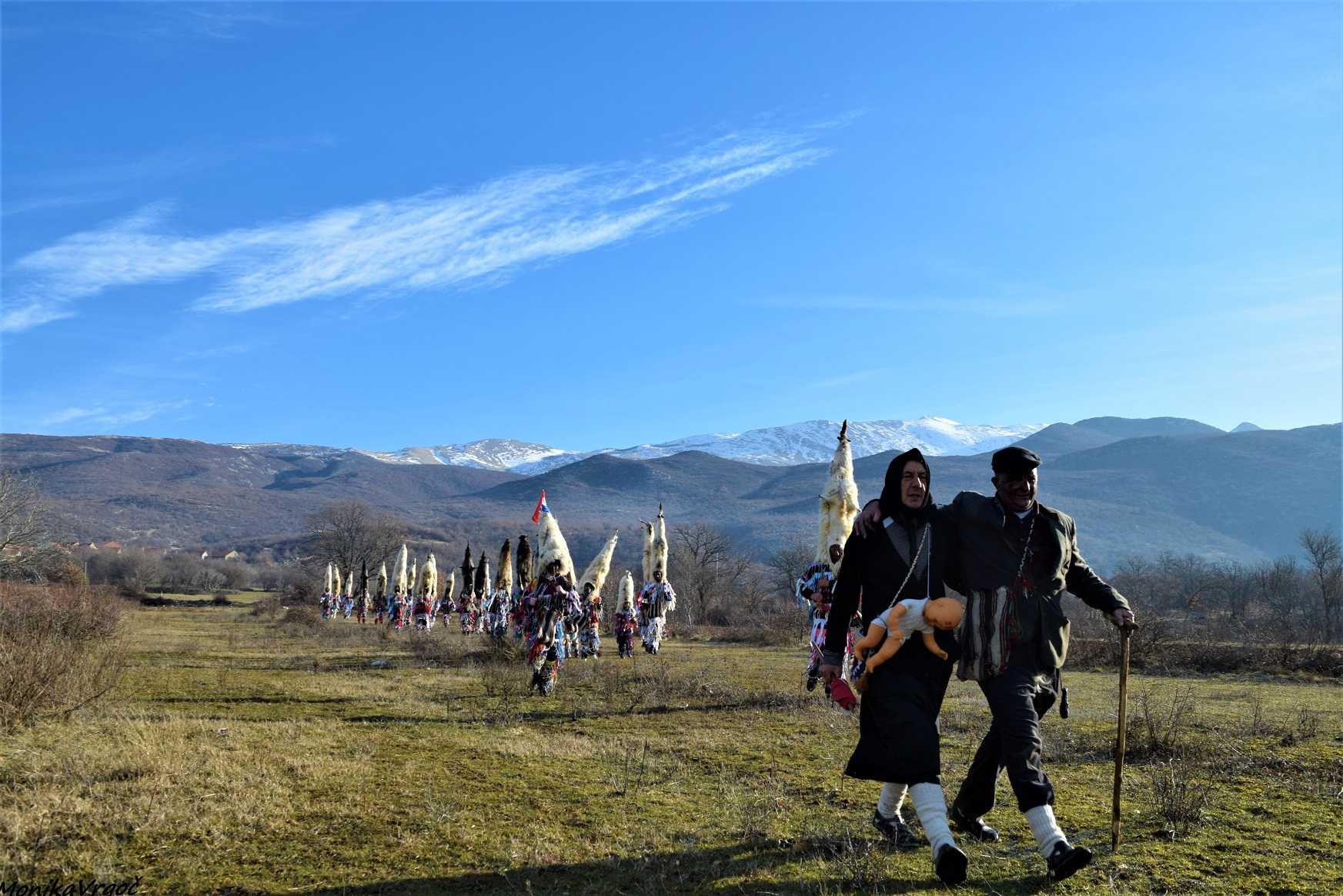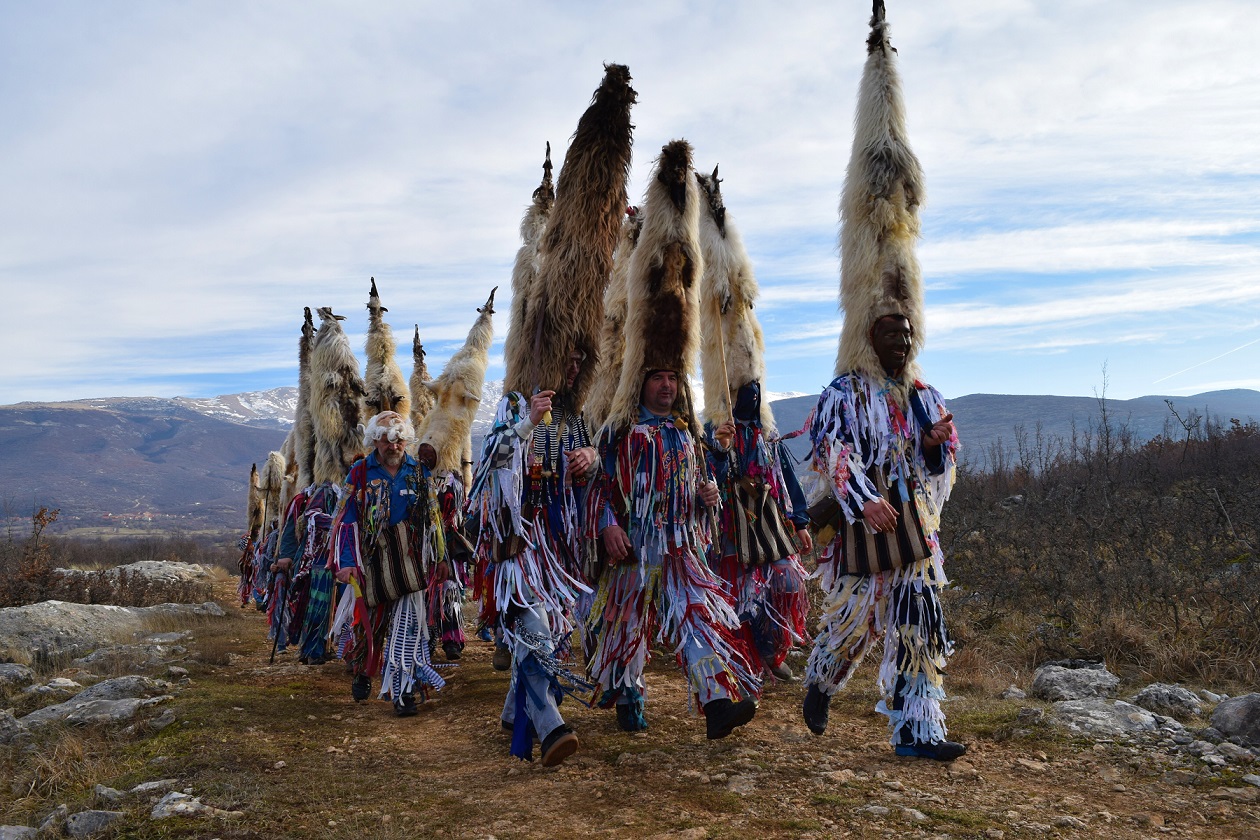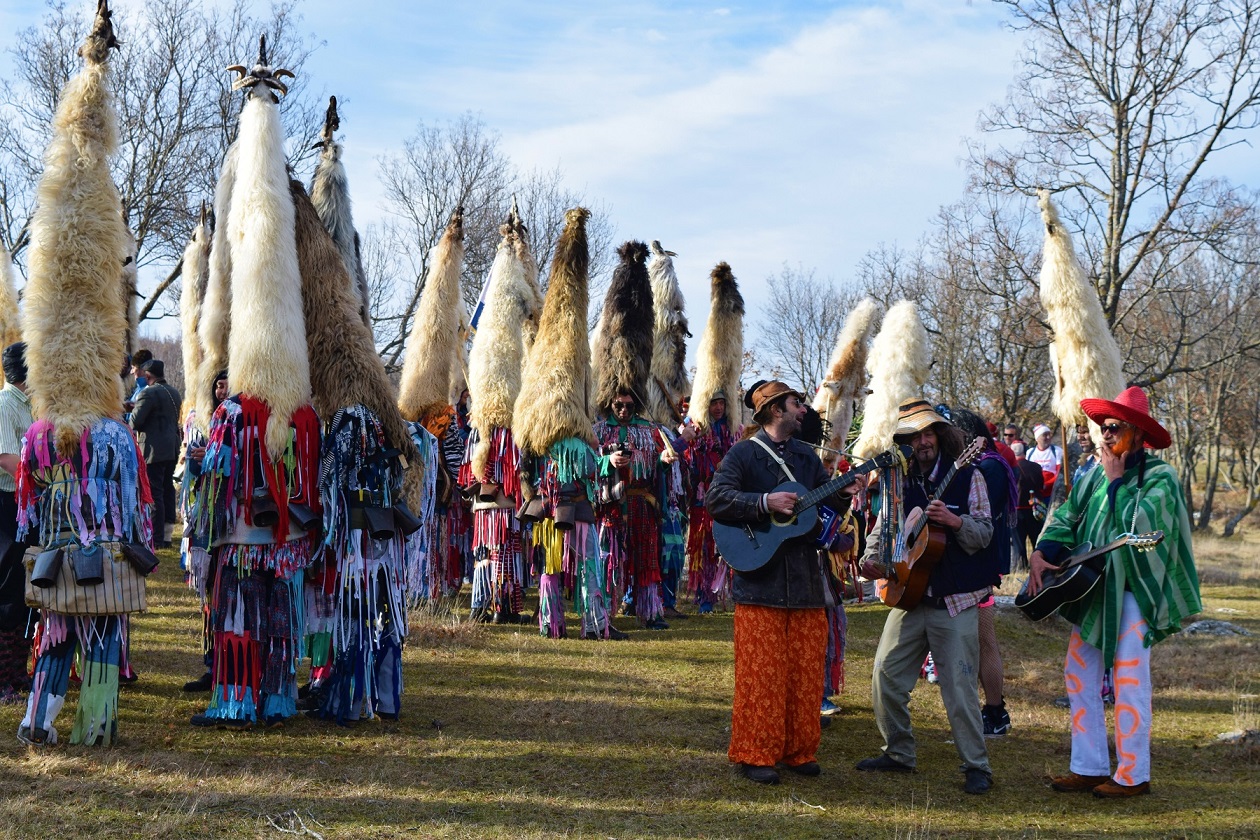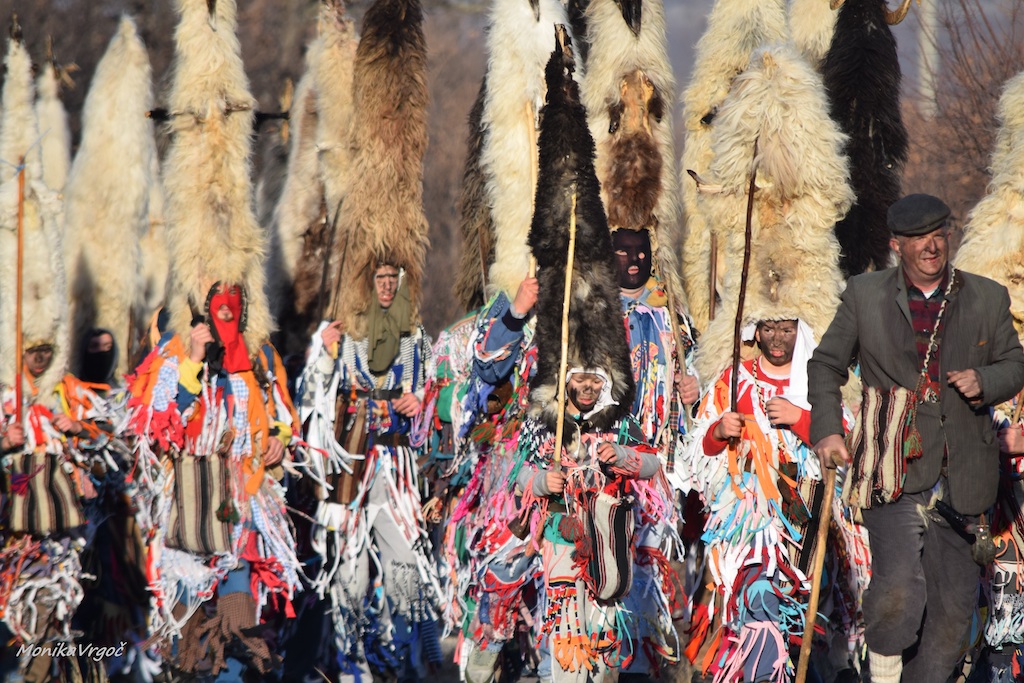Didi s Kamesnice and More Carnival Customs from the Dalmatian Hinterland
February 13, 2021 – Sinj and the Cetina region have long attracted attention with unique and exciting events. One of them is certainly their well-known masquerade festival with 'Didi s Kamesnice', masquerade group from the village of Gljev in the Dalmatian hinterland.
Cetina Region's Masquerade Festival should have been held for the seventh time this year, as well as the centuries-old gatherings of masquerade groups in the Podkamešnica villages, which were supposed to precede the festival and the usual final carnival events. However, due to the ongoing coronavirus pandemic, it was all postponed for the next year.
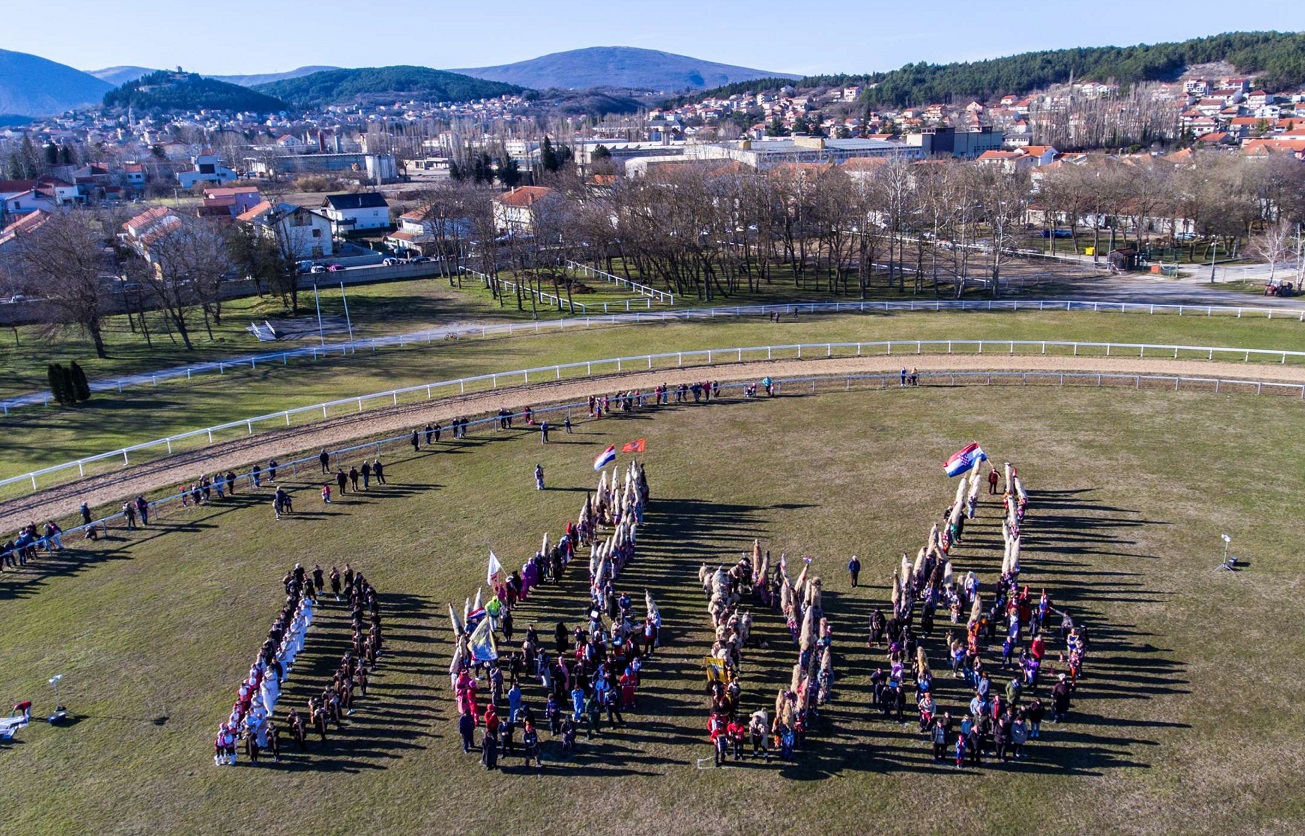
Millennial photo of the Sinj region masquerades - DIDI / Šime Strikoman
At the Festival, numerous masquerade groups present themselves to the general public in one place. The result is a lively, cheerful, colorful, and noisy procession that maintains a long tradition, according to carefully and strictly established rules.
Croatian protected intangible heritage
Masquerades are the best bearers and guardians of carnival customs in the Cetina region. After the Holy Three Kings' feast on January 6, they set out on visits to villages and hamlets. They are even included on the list of protected intangible cultural goods of the Republic of Croatia, which testifies how precious they are.
Podkamešnička villages are villages at the foot of Kamešnica mountain located on Croatia's border with Bosnia and Herzegovina, near Sinj in the Dalmatian hinterland.
In the villages of Gljev, Han, Obrovac Sinjski, Bajagić, and Gala, masquerade processions are a unique and original way of depicting ancient customs interwoven with the sound of masquerade bells and other accompanying rituals.
Masquerade procession in Obrovac Sinjski / Monika Vrgoč
In the municipality of Otok, each hamlet has its own masquerade group (Jelašce, Priblaće, Živinice, Gala, Ruda, Udovičići, and occasionally there are groups Glavičica-Priblaće, Strana with masquerades from Ovrlje and Korita). In the town of Trilj, masquerade processions take place in the villages of Grab, Jabuka, Košute, Vedrine, Vrpolje, Čačvina, and Velić.
Masquerade procession in Otok / Monika Vrgoč
Masquerade procession in Vrpolje / Monika Vrgoč
Driving away winter and bad spirits
The carnival procession's schedule is based on traditional rules, not subject to any changes, and only men participate in it. At the head is a group of white masquerades and wedding guests, then a group of comedies, and finally, with a certain distance, black masquerades.
The wedding party, which symbolizes the end of winter and spring arrival, was once led by the first grandfather (hrv. dida) and nowadays by the flag bearer (hrv. barjaktar).
Gljev / Monika Vrgoč
The masculine, pregnant bride, accompanied by a groomsman, is looking for the groom, which is the procession's main "task."
There are also married women, girls, and other wedding characters dressed in formal attire (folk costume).
Turk commands the masquerades, taking care not to mix white and black wedding guests, who must never be in the same place at the same time. The Turk and the aunt's characters are associated with the long presence of the Ottomans in this area.
Black wedding guests / Monika Vrgoč
Behind the wedding are comedies, a masquerade group that criticizes current social and political topics without sparing criticism.
Grandparents lead black weddings. They are bearers of the fertility cult who, by simulating sexual intercourse, invoke a better and more abundant annual harvest, another indispensable ritual element.
Grandparents in Gljev / Monika Vrgoč
There are also mourners in the procession, mourning widows who shout funny and comic slogans.
The most attractive and impressive part of the procession are the imposing "didi." They wear sheep's wool up to 1.5 m high on their heads and bells around their waists. They are dressed in old clothes sewn with colorful fringes.
They embody the age-old ritual struggle of good spirits with winter, which they drive away with noise and jumping. With the loud ringing of bells, they cast spells from cattle, which, along with fertility and spring arrival, testifies the most important preoccupations of our ancestors.
Monika Vrgoč
Monika Vrgoč
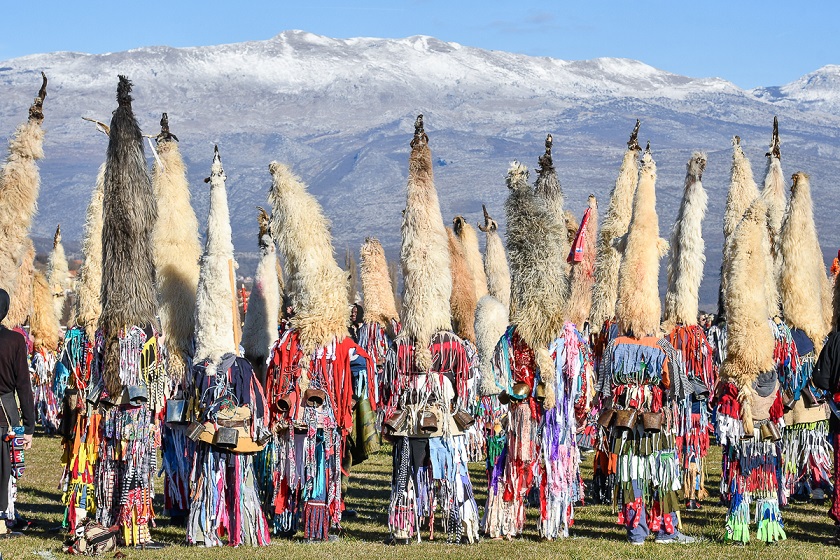
Ivana Pavičić
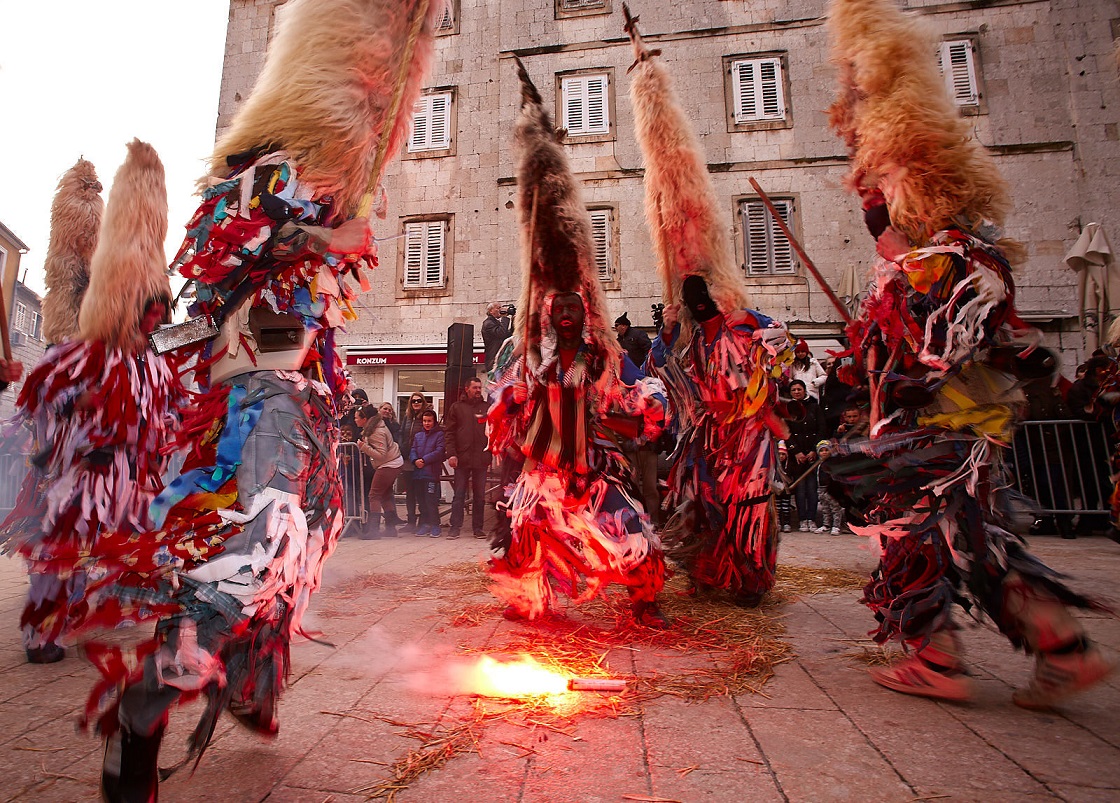
Nikola Belančić
Rich and inspiring carnival tradition
This long tradition of carnival customs, which preserves local identity, is nurtured and promoted by the association "Didi from Kamešnica" from the village of Gljev.
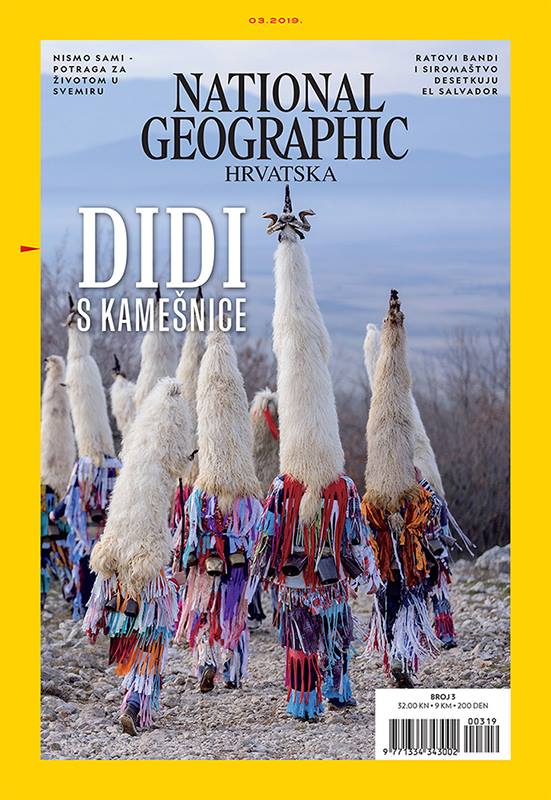
The Cetina region's carnival festival seeks to popularize the rich tradition of carnival customs, unique in Europe. Although carnival customs with similar themes exist in other parts of Croatia and Europe, they always embody the ritual struggle of good spirits with winter.
Therefore, "Didi" are welcome guests at festivals throughout Croatia and Europe and an inspiring motive for numerous scientific research, exhibitions, and lectures on the topic of intangible heritage. The famous magazine National Geographic brings the unique "Didi s Kamešnice" on one of its covers.
All photos © Sinj Tourist Board
For the latest travel info, bookmark our main travel info article, which is updated daily.
Read the Croatian Travel Update in your language - now available in 24 languages.
Visit Omis: The Summertime Holiday Winter Dreams Are Made For
17 December 2020 – Missing adventure, escape, breathtaking landscapes and unspoiled nature? Visit Omis in 2021 - with 20 kilometres of perfect beaches and crystal-clear seas, the mighty Cetina river and an atmospheric Old Town, it's the summertime holiday that winter dreams are made for.
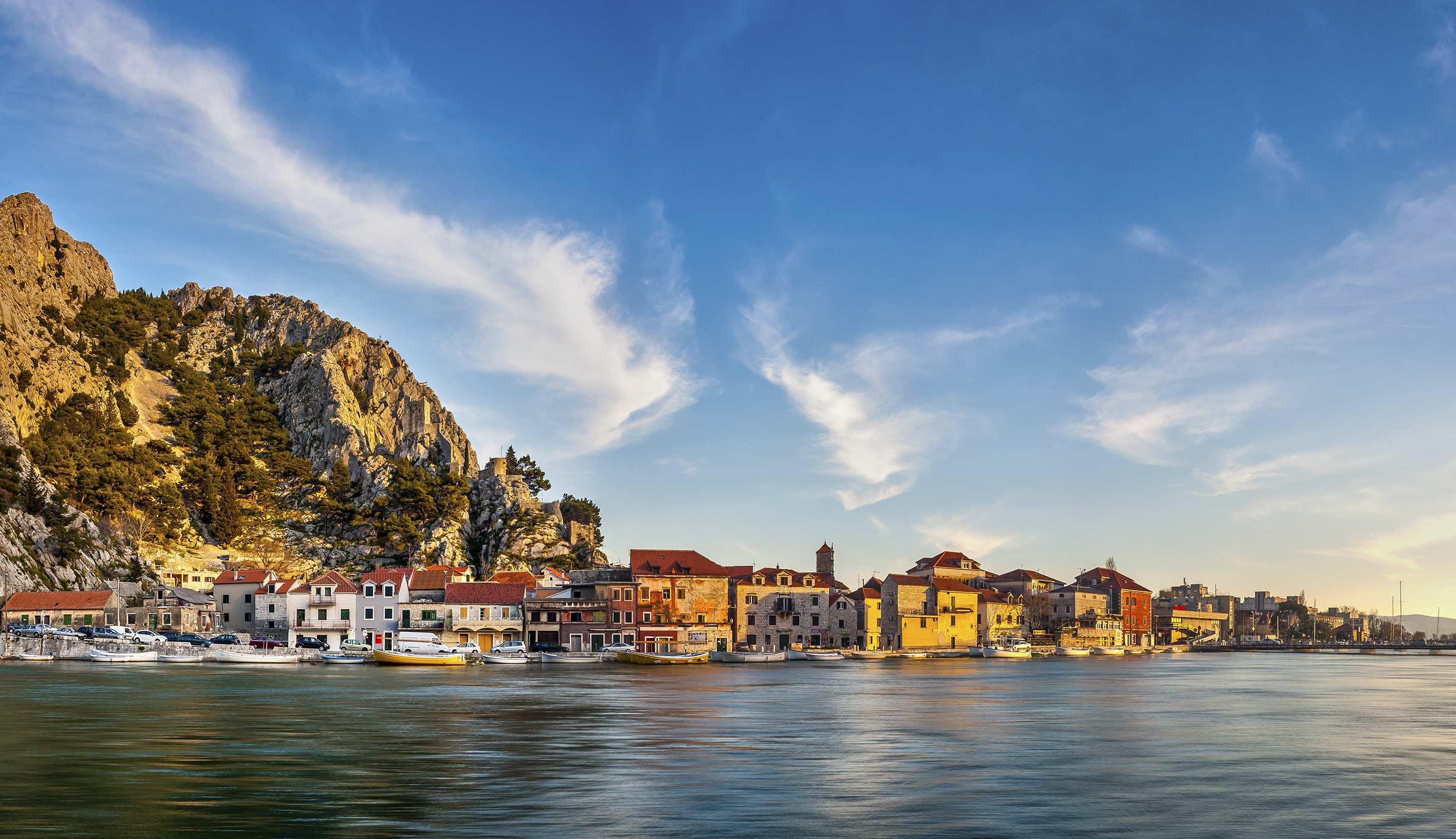 The pretty pastel shades of buildings in Omis contrast beautifully against the sheer, grey, karst rock which rises sharply behind © Omis Tourist Board
The pretty pastel shades of buildings in Omis contrast beautifully against the sheer, grey, karst rock which rises sharply behind © Omis Tourist Board
The cold outside is often reason enough to spend most of winter indoors. It's a good time for wrapping presents or even wrapping yourself in blankets. Perhaps, if it snows, you'll sit by the window, daydreaming. With a chill in the air, there's no better dream than that of next summer. In the warmth of the summer sun, you can forget all about those blankets and staying indoors. It's time for escape, adventure, the great outdoors, to hit the beach and to swim in the sea.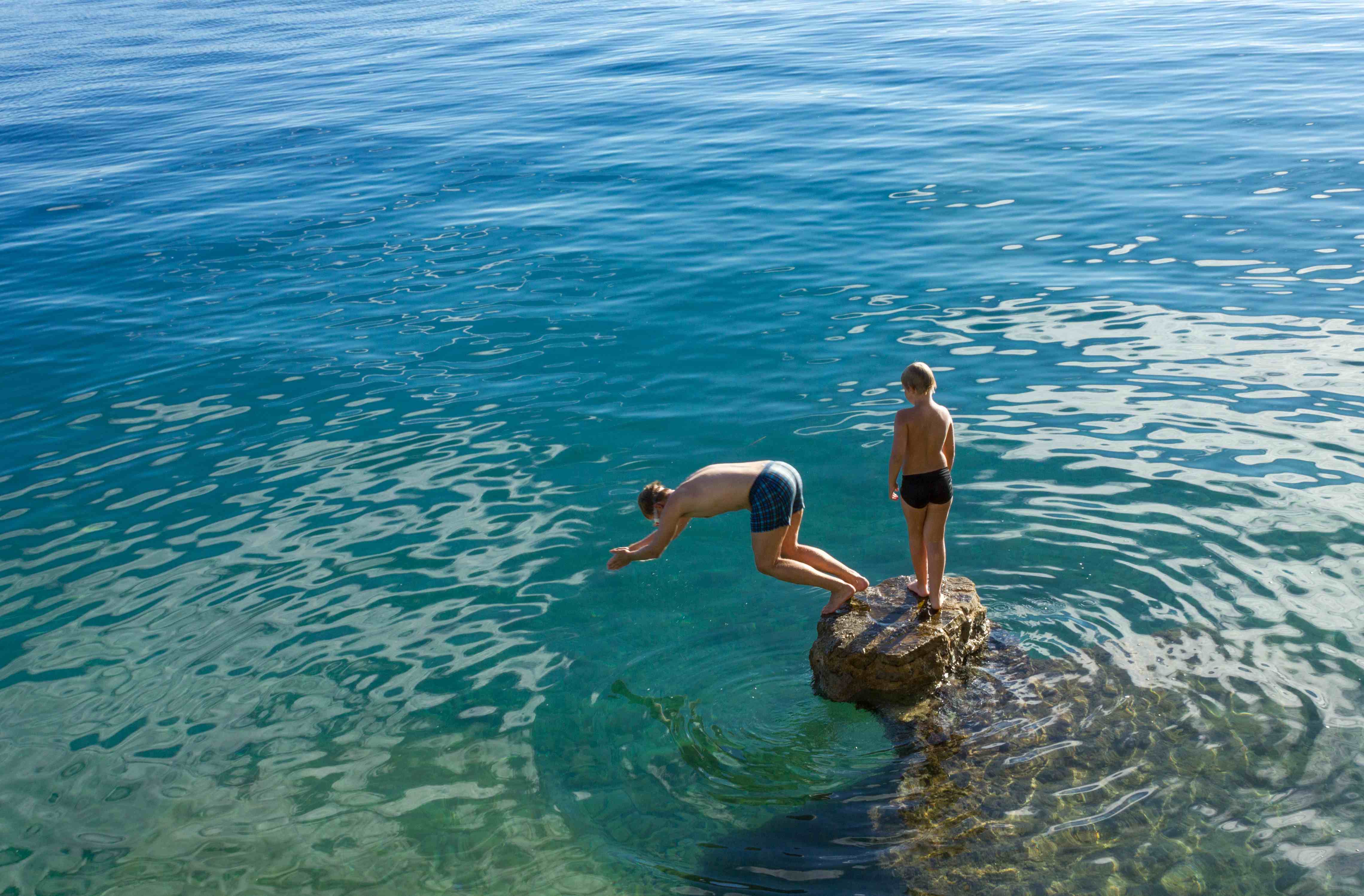 Crystal-clear waters run along the length of the Omis riviera © Omis Tourist Board
Crystal-clear waters run along the length of the Omis riviera © Omis Tourist Board
In 2021, the City of Omis will once again welcome winter's dreamers. From Springtime to October, visitors will come and enjoy its extended summer, many of them returning as they do every year. Because, once you visit Omis, there really is nowhere else that can match its incredible offer.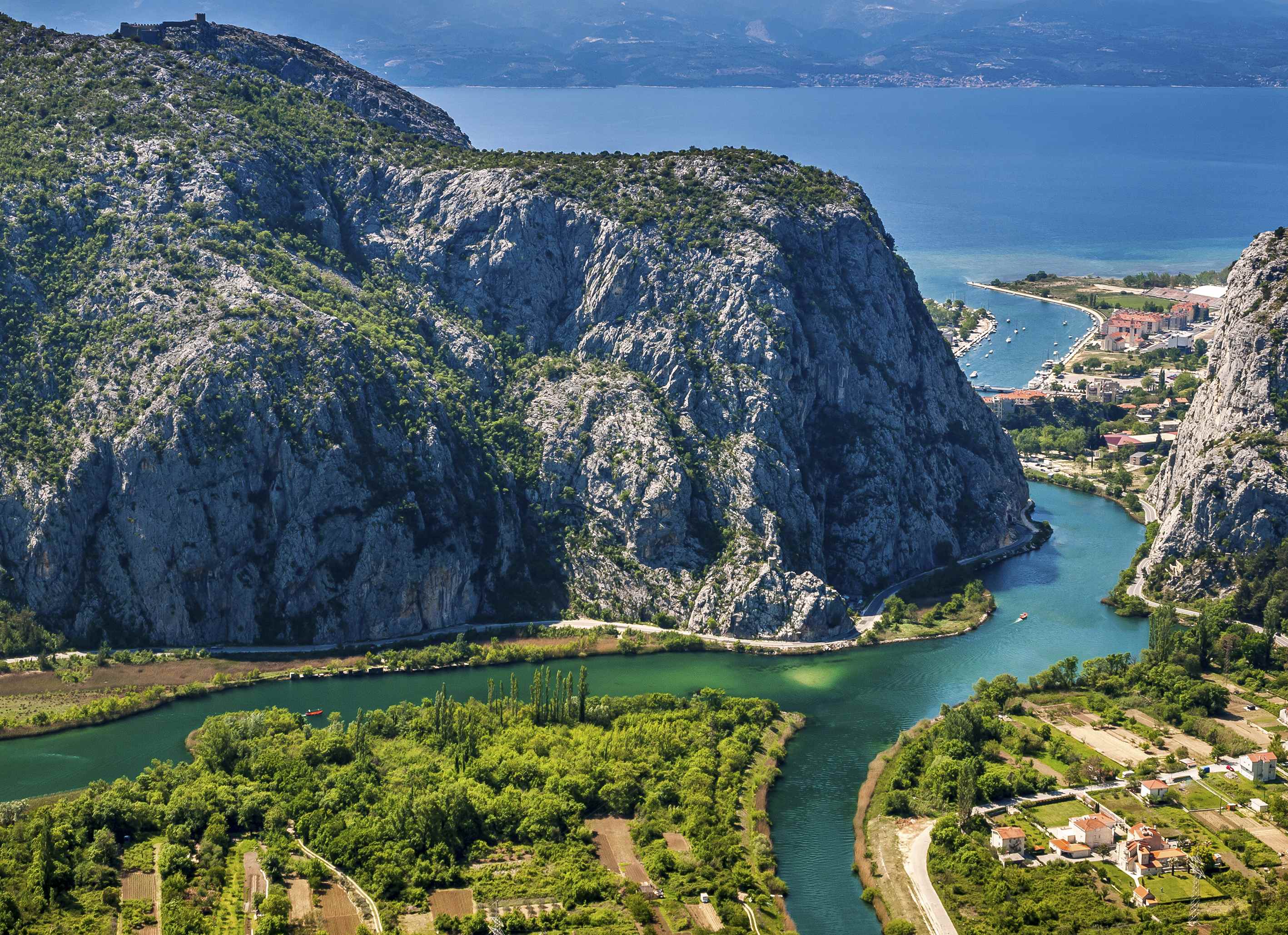 A spectacular landscape, with the lush Cetina river valley cutting through the Dinaric Alps to flow into the sea at Omis - you can see the island of Brac in the distance © Omis Tourist Board
A spectacular landscape, with the lush Cetina river valley cutting through the Dinaric Alps to flow into the sea at Omis - you can see the island of Brac in the distance © Omis Tourist Board
The unique experience when you visit Omis is a product of a singular history and geography. Standing on the mouth of the Cetina - the largest river in Croatia to drain into the Adriatic – Omis and its surrounding riviera is not only filled with pristine and peaceful beaches, it also has waters that, for hundreds of years, have connected the city far into the hinterland. When you visit Omis, it is this riverside positioning that gives its unmissable adventures, culture, heritage and nature.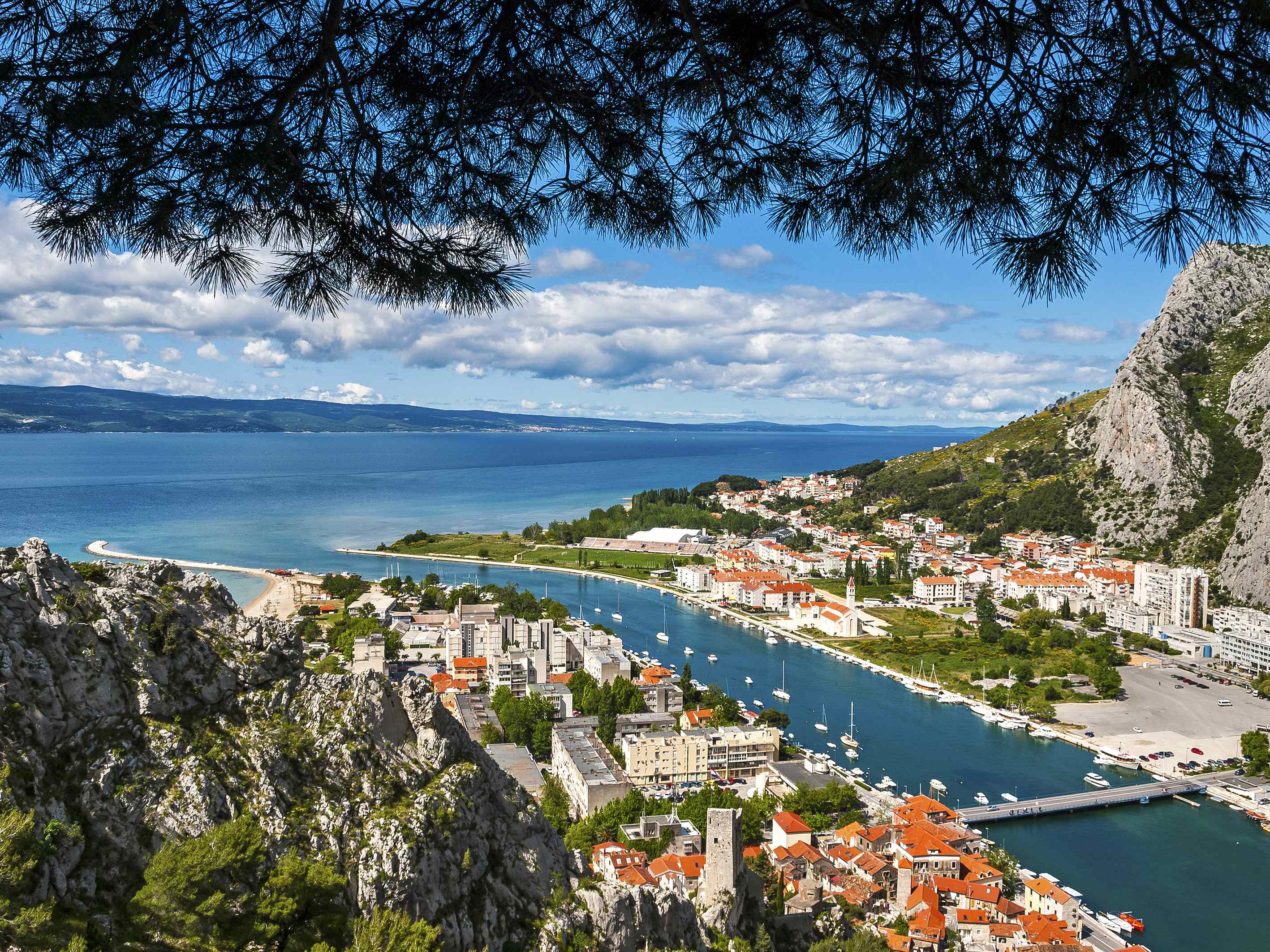 The Cetina river is the largest to flow into the Adriatic in Croatia and helps give Omis a truly unique offer © Omis Tourist Board
The Cetina river is the largest to flow into the Adriatic in Croatia and helps give Omis a truly unique offer © Omis Tourist Board
Omis has been inhabited since at least Roman times. Today, the winding, narrow streets of its Old Town are a pretty promenade with a distinctly Mediterranean atmosphere. Walking down these stone-paved pathways, intriguing architecture built over centuries is revealed – an unexpected city square opens up, seating drinkers and diners. Above them, the walls of an ancient church and beyond, the spectacularly lit Mirabella fortress that stands impressively above the town. You can easily walk to the top and look over the Old Town and river or, by day, take the path further back, up to the 15th century Starigrad Fortress. Its walls are renowned to hold one of the greatest views in Croatia, the island of Brac dominating the skyline, further still, the island of Hvar. Both can be toured by boat on day trips when you visit Omis.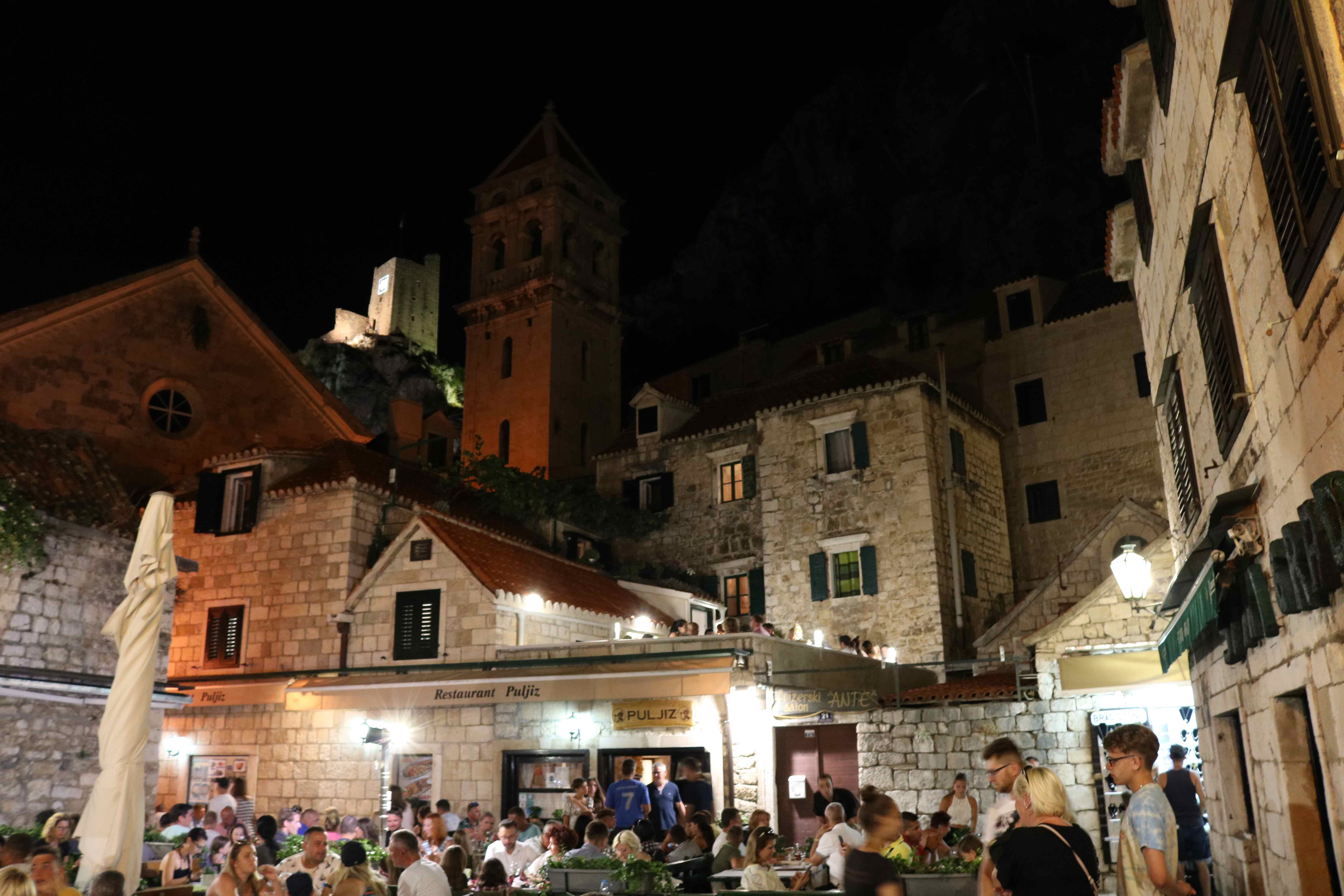 The atmosphere-filled Old Town of Omis © Marc Rowlands
The atmosphere-filled Old Town of Omis © Marc Rowlands
Besides venturing out to sea by boat, taking to the waters of the Cetina river is the best way to get the most from the unique offer when you visit Omis. You can kayak from the town into the nearest sections, watching as the pastel shades of Omis buildings are replaced by the towering, epic cliffs of grey karst rock, sometimes dotted with brave and experienced free climbers. Then, suddenly, the river widens to become flanked by reeds, then fields and trees. Birds sit atop the water or fly overhead, fish dart below you in crystal-clear waters, insects and frogs can be heard coming from some hidden place. The whole landscape seems alive, yet silent except for the sounds of nature – you can't hear a single car engine, not the buzz of an overhead cable, only the dipping of your oar in the calm waters.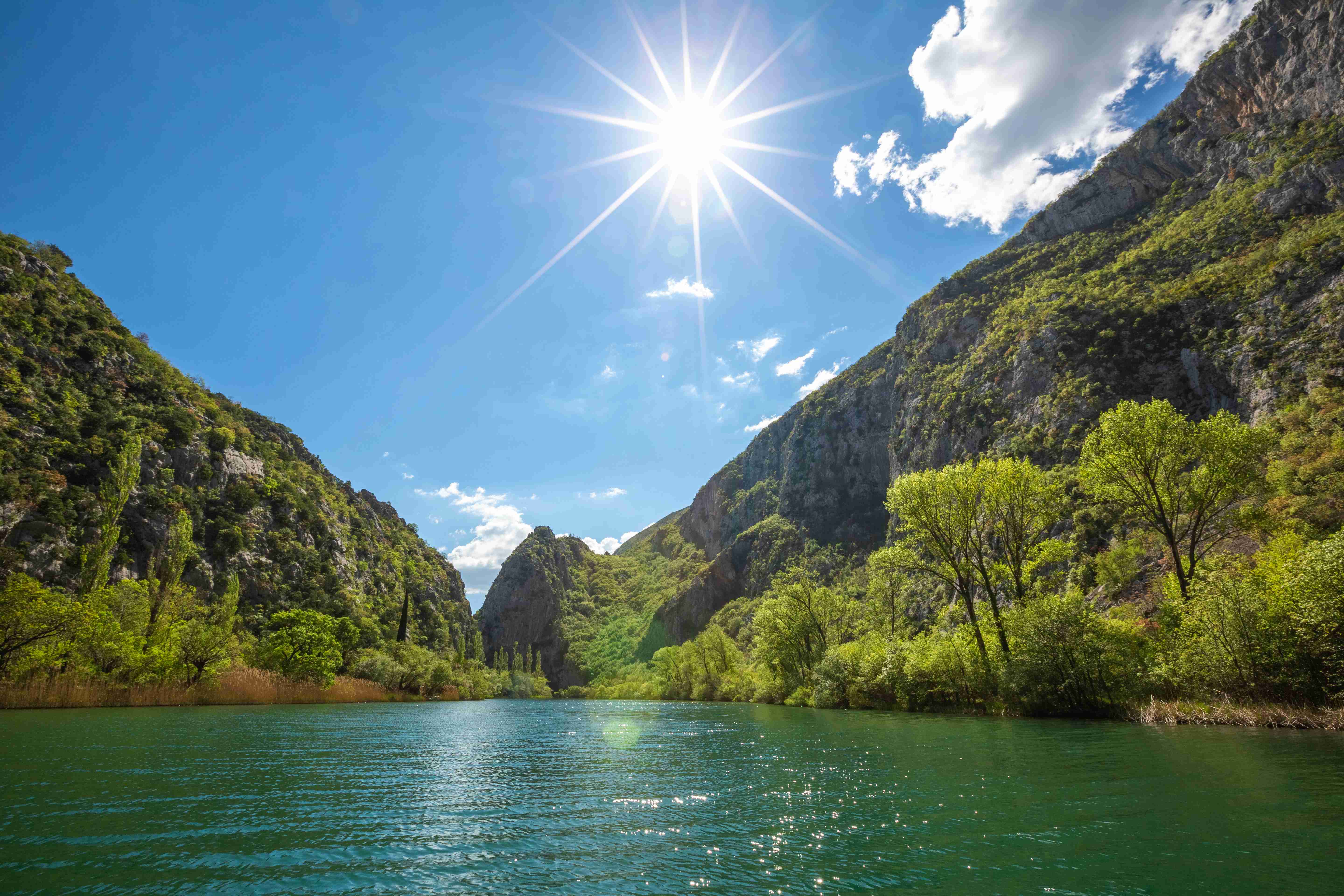 The still and silent Cetina river valley near Omis, perfect for kayaking and reconnecting with nature © Samir Kurtagić / Omis Tourist Board
The still and silent Cetina river valley near Omis, perfect for kayaking and reconnecting with nature © Samir Kurtagić / Omis Tourist Board
Further up the river, the sounds are not so silent. Thrillseekers scream as they fly down the longest run of ziplines in Croatia – a series of eight lines, at times rising 150 metres above the river, the scenery of mountains and surging river is breathtaking, as feet whistle over high treetops. Further up the river, rapids produce white waters perfect for rafting. Although an action-packed run of over two-hours duration, it's an undemanding course taken by many families with children as young as six. Between the fast-moving sections are waterfalls that spray the air and peaceful pools where you pause to swim. At one of the largest stands a huge picnic area, serviced by a restaurant specialising in the rustic cuisine of this part of the Dalmatian hinterland. Thick-crusted, homemade bread is made within metal bells atop wood fires, the perfect accompaniment to local cheeses, prosciutto and seafood.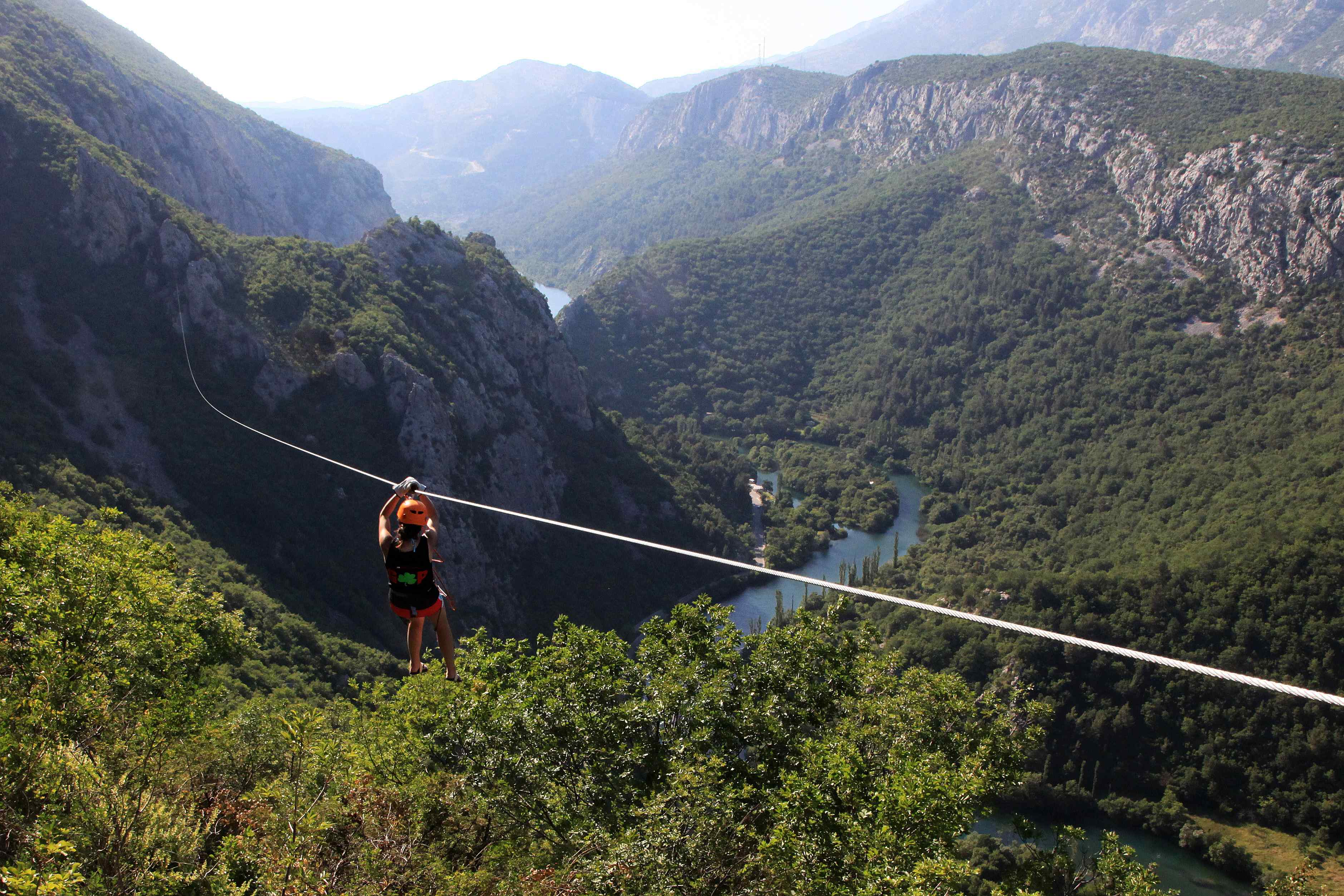 © Zipline Croatia
© Zipline Croatia
Here, away from the shoreline of the town, countless small villages appear on the roads between the river and mountains. Life in these villages looks remarkably like it did a few hundred years ago. The same fruits and vegetables and vines still grow around the traditional houses, many of them ending up on the tables of the fine restaurants you'll dine in when you visit Omis. The same meals are prepared, such as Soparnik, one of Croatia's most authentic dishes – you can only find it in the small region surrounding Omis. The same folk dances are preserved, and the same songs fill the air. You can hear many of them in Omis itself – the city hosts a famous 55-year-old festival of klapa (acapella) music, its singers dressed in traditional clothes, their voices echoing around the stone streets of the Old Town in the same way they have for hundreds of years. The chamber music evenings and one of the most important guitar festivals in the region add to the wonderful entertainment and atmosphere of balmy summer evenings you have when you visit Omis.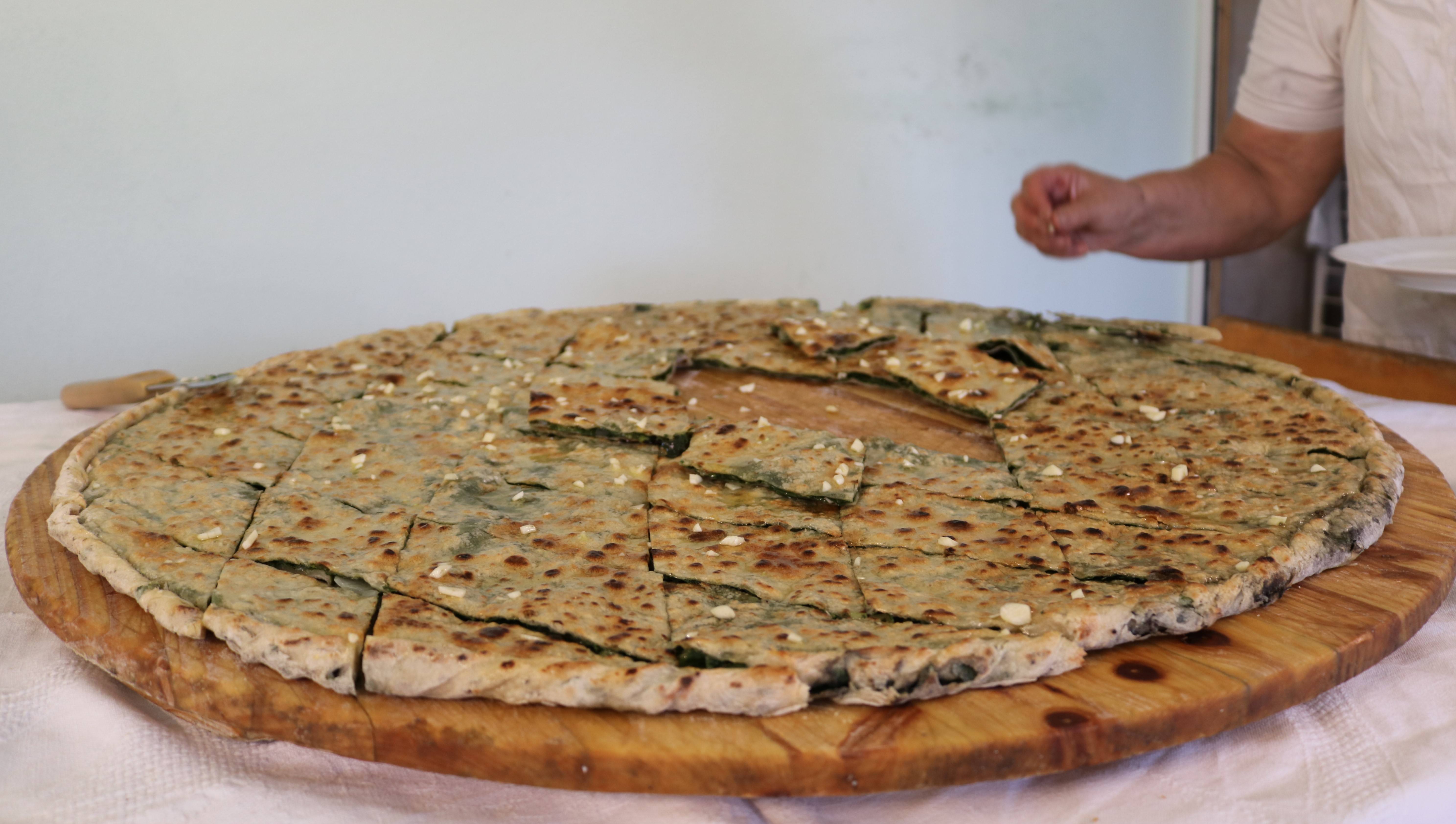 Soparnik, one of the most authentically Croatian foods in the country. It comes from the hinterland behind Omis and it's unlikely you'll find it anywhere else © Marc Rowlands
Soparnik, one of the most authentically Croatian foods in the country. It comes from the hinterland behind Omis and it's unlikely you'll find it anywhere else © Marc Rowlands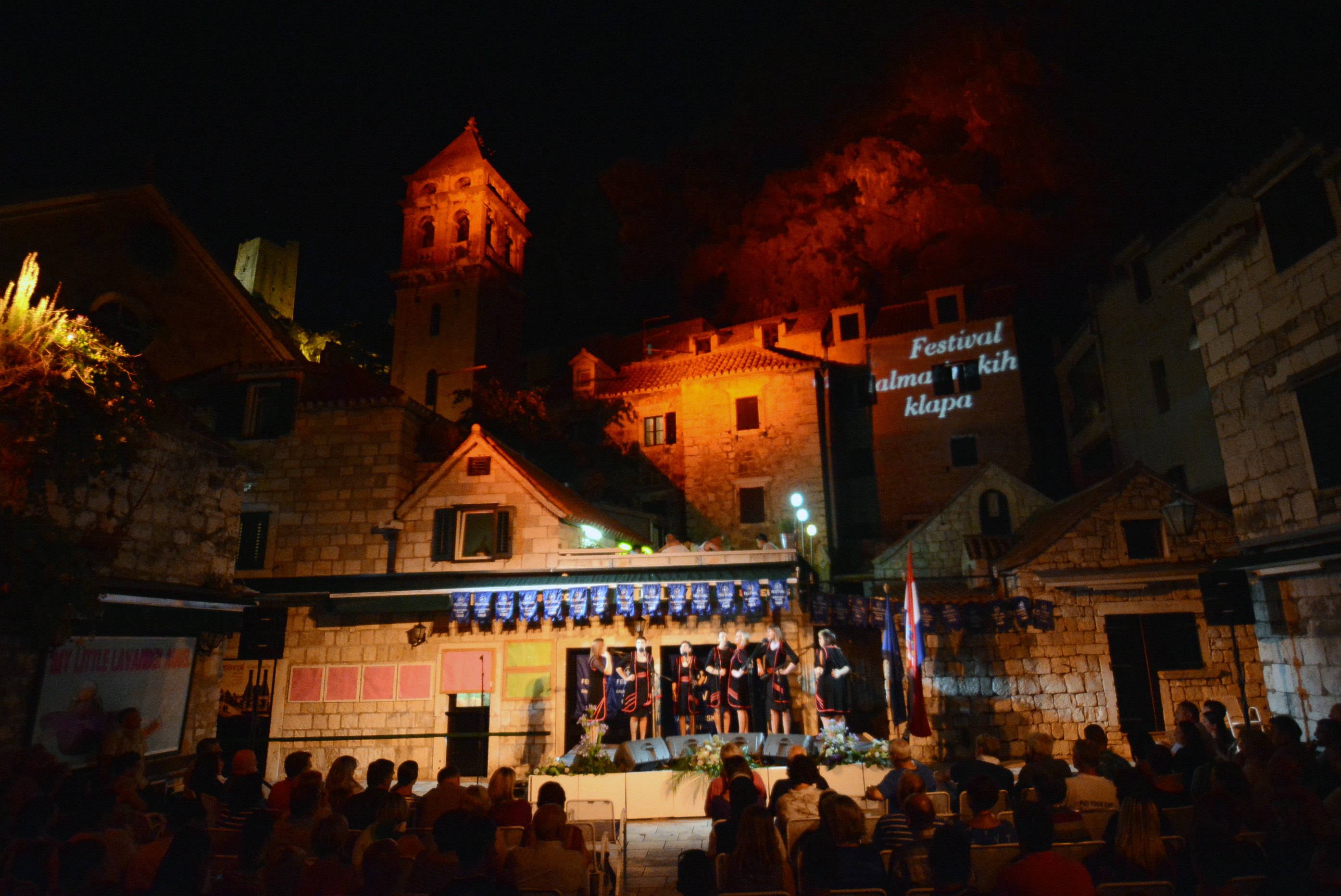 The 55-year-old festival of klapa music in Omis © Omis Tourist Board
The 55-year-old festival of klapa music in Omis © Omis Tourist Board
Of course, no trip to the Adriatic is complete without time spent on the beach and swimming in the sea. And, when you visit Omis, you're in one of the best places anywhere in Croatia to enjoy it. Relatively undiscovered, the Omis riviera has a wide range of options to suit all. Want to stay close to town? Visit Omis city beach – it's right on your doorstep, popular with families and its waters famously clean. It is extremely rare to find a huge sandy beach like this, right in the heart of the city.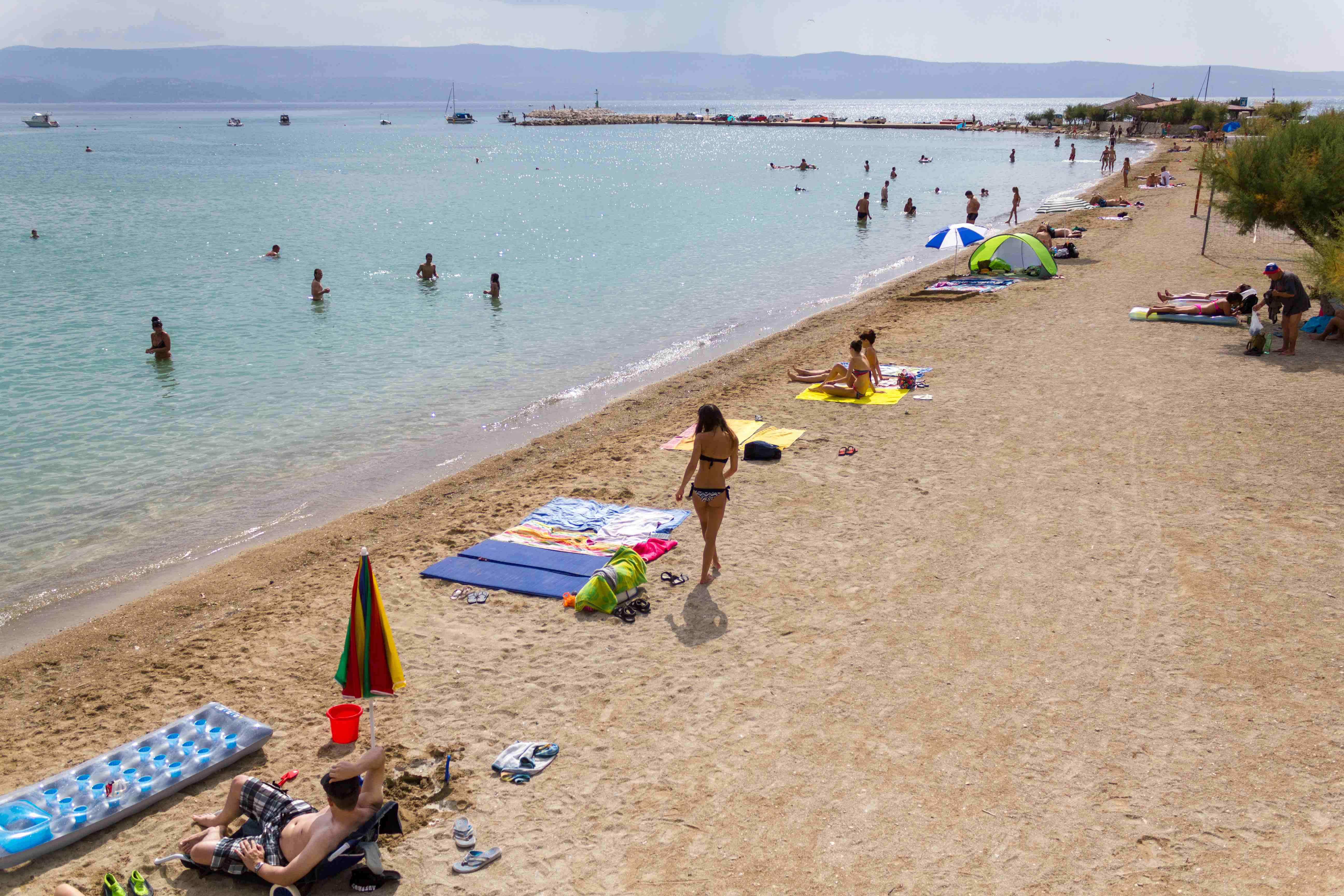 Omis city beach, a huge stretch of sand, moments walk from the centre - there's plenty of room for everyone © Omis Tourist Board
Omis city beach, a huge stretch of sand, moments walk from the centre - there's plenty of room for everyone © Omis Tourist Board
A short ride down the coast offers a 20-kilometre stretch of perfect small-pebble beaches, shaded by scented pine trees, sitting on impossibly clear waters. Pretty hamlets and fishing villages like Nemira, Stanici, Ruskamen, Lokma Rogoznica, Medici, Mimice, Marusici and Pisak allow you to chose between peaceful seclusion, diving and watersports or flavour-packed lunchtime dining in a traditional Dalmatian tavern.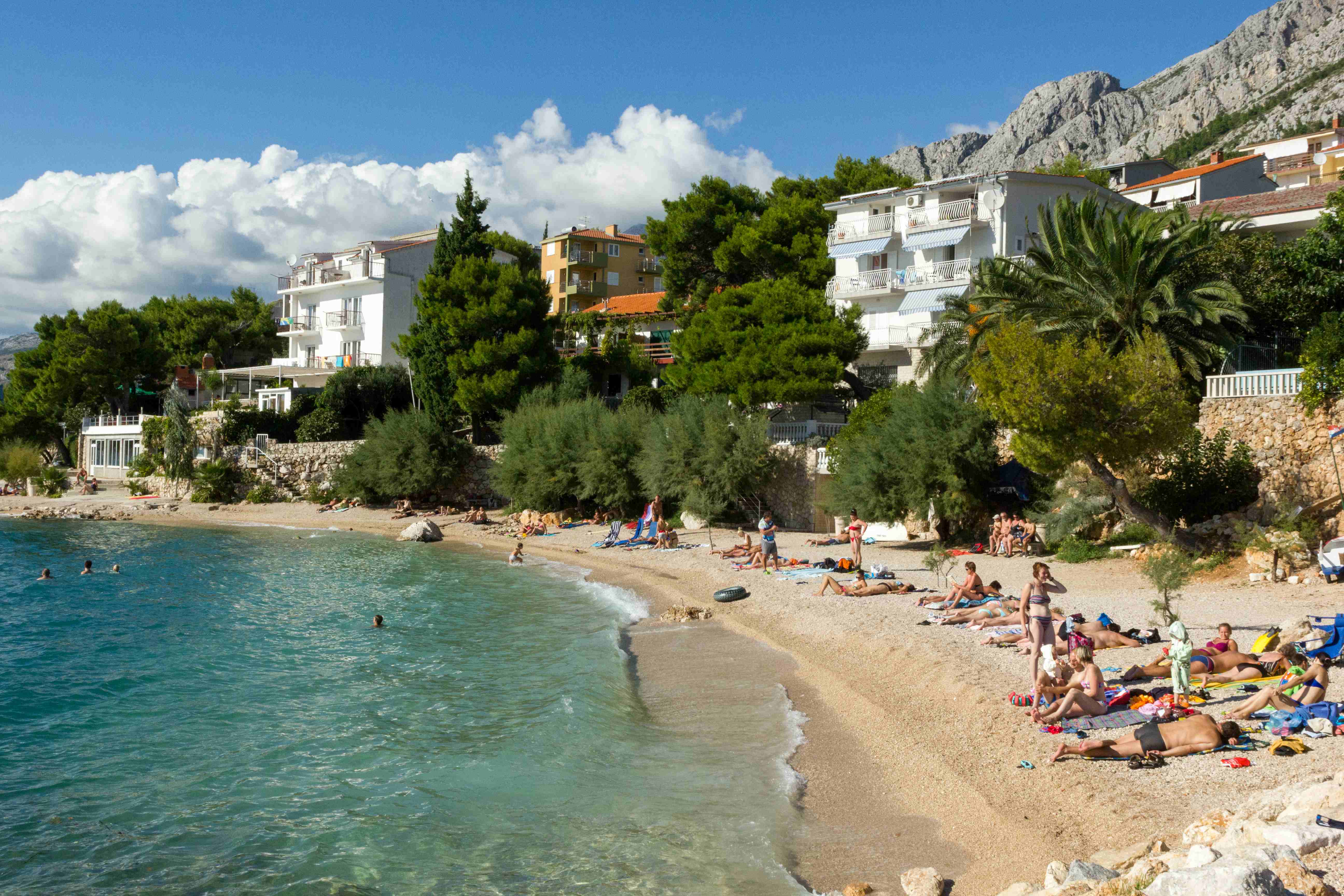 The village of Nemira, one of the countless pristine beaches along the 20 kilometres of the Omis riviera © Omis Tourist Board
The village of Nemira, one of the countless pristine beaches along the 20 kilometres of the Omis riviera © Omis Tourist Board
This winter has long to go. We will be inside for quite some time yet. But, that gives us plenty of time to dream of next summer. Of all the places you think you'd like to be, once the warm days return, the City of Omis and its riviera should be top of the list. Unique in its offer of adventure, nature, culture and heritage, there really is nowhere else like it on the whole of the Adriatic.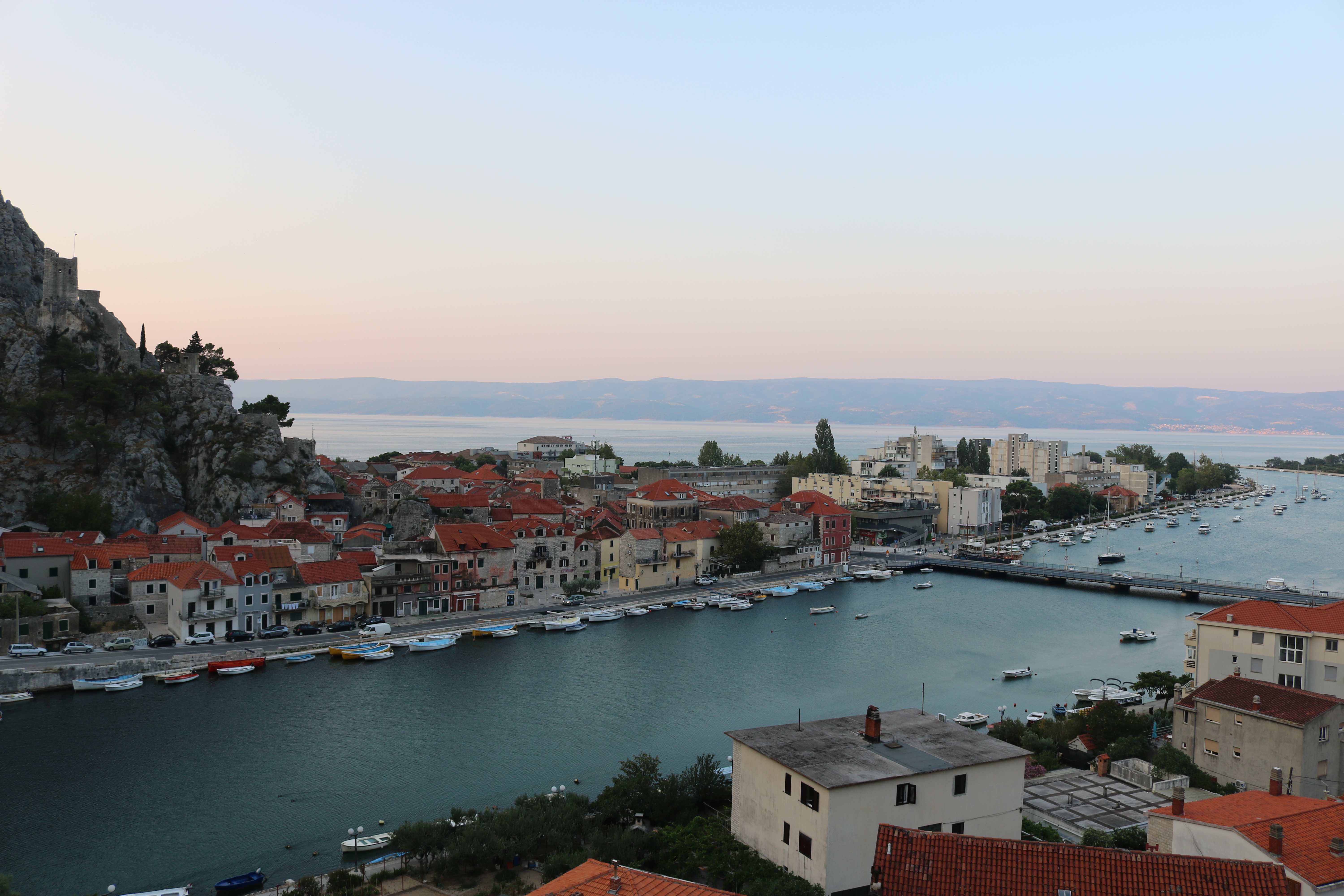 Daybreak over Omis, as seen from the restaurant balcony of Hotel Villa Dvor. The hotel's restaurant is the best place to take coffee in town, the view is spectacular © Marc Rowlands
Daybreak over Omis, as seen from the restaurant balcony of Hotel Villa Dvor. The hotel's restaurant is the best place to take coffee in town, the view is spectacular © Marc Rowlands
This article was written by TCN journalists based on first-hand experience of visiting Omis and was subsequently approved by Omis Tourist Board
5. Carnival Hits the Streets of Cetina Region Next Month!
February 12, 2019 - Sinj and the Cetina region have long been attentive to unique and interesting events, but their Carnival celebration certainly belongs to a separate category.
This year, the Jubilee 5th Carnival will be held on March 2nd. Numerous Carnival (or ‘Mačkare) groups will have the opportunity to present themselves to the public in the same place - resulting in a lively, cheerful and noisy procession which speaks to a long and colourful tradition according to carefully and strictly established rules. The Carnival groups are the best connoisseurs and custodians of traditional customs in the region, and the fact that they are on the list of protected immaterial cultural goods of the Republic of Croatia is also testimony to their grandeur.
Željko Zrnčić
In the villages of Gljev, Han, Obrovac Sinjski, Bajagić and Gala, the Carnival groups have a unique and original way of displaying ancient customs, complete with the sounds of bells and other accompanying rituals. In the municipality of Otok, each hamlet has its own Carnival group (Jelašce, Priblaće, Živinice, Gala, Ruda, Udovičići, and occasionally groups from Glavičica-Priblaće, Ovrlje and Koritā), while in the municipality of Trilj, you can find Carnival groups from the villages of Grab, Jabuka, Košute, Vedrine, Vrpolje, Čačvina and Velić.

Nikola Belančić
The layout of the Carnival parade is based on traditional rules, irrespective of any changes, with only men allowed to participate.
The most attractive and impressive part of the procession is the ‘didi’ (old men), who carry the fleece of sheep on their heads, standing tall at a height of up to 1.5 meters, with bells around their waist. They are dressed in old clothes with colorful fringes sewn on. The 'didi' symbolize the ritual battle of good spirits in winter, and chase them away by making noise and jumping.
The 'Didi' from Kamešnica will observe the customs and rich traditions beyond the borders of Croatia. Namely, on February 16 and 17, they will be guests of the 24th edition of the carnival "Su Carrasegare Antigu Samughesu" in the city of Samugheo, in the province of Oristano, Sardinia. This important visit is the result of seven-year of cooperation between the Alka Knights Society Sinj and the members of Sa Sartiglia from Oristano, who happily visit each other during the Alka celebration and Sartiglia, one of the last Medieval games of chivalry with knights and horses in Mediterranean area. With the valuable support of Don Josip Dukić, this opportunity was realized.
Željko Zrnčić
An exceptionally valuable publication "Didi from Kamešnica” was promoted on January 31 in the Alka courtyard in Sinj. In the issue of the Croatian Photo Alliance - youth for youth - a visually appealing publication is the result of a series of photography collections for children and youth held from 2014 to 2018 in cooperation with the Carnival Association Didi from Kamešnica. With the promotion of the publication, the exhibition of photographs of the same name was opened, as well as an exhibition of Carnival masks by the elementary school students Ivan Mažuranić from Obrovac Sinjski. The main goal of familiarizing the children with the culture and customs has been completely fulfilled - and the heritage in the Cetina region lives through all generations.

Nikola Belančić
To read more about Inland Dalmatia, follow TCN'as dedicated page.
Tourist Board of Sinj Organizes "Tourist in Your Town" this Weekend
The educational campaign “Tourist in your town” will be held on March 4, 2017.
Petition Surfaces to Stop Construction of Thermoelectric Power Plant on Peruća Lake
A petition has surfaced on the Facebook feeds of many throughout Croatia urging signatures to stop the construction of the thermoelectric power plant on Peruća Lake located in inland Dalmatia.


